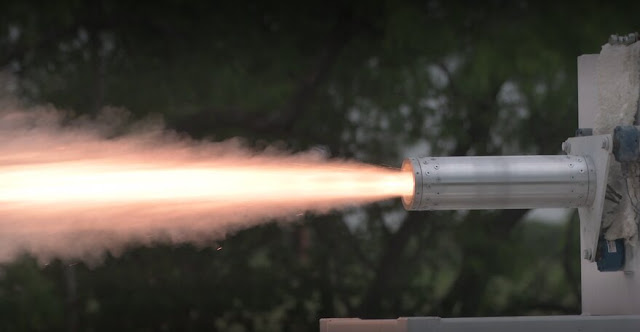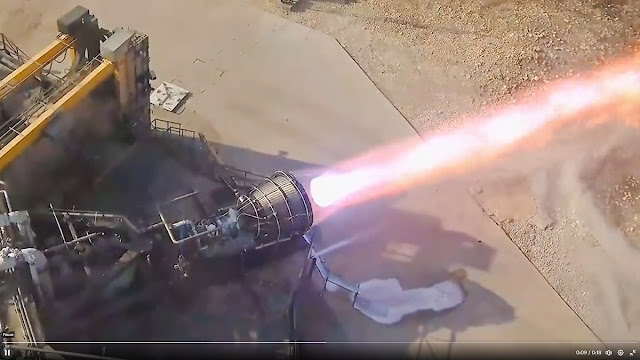Short (and short term) story first:
Wednesday morning at 3:54 AM ET, 0754 UTC, the crew that has been on the ISS for just over a year will leave the ISS
in their Soyuz spacecraft bound for the steppes of Kazakhstan. If all
goes according to plan they'll land at 7:17 AM ET, 1117 UTC, roughly 3-1/2
hours later.
Sergey Prokopyev and Dmitri Petelin of the Russian space agency Roscosmos
along with NASA Astronaut Frank Rubio flew up to the ISS on September 21, 2022
for the typical six month crew rotation on the station. Three months
into their six month stay, on December 15th, their Soyuz spacecraft was found
to be leaking and
lost all of its coolant to space. The capsule was deemed unsafe to fly and the three had to wait for a replacement Soyuz capsule that was prepared,
launched, and arrived at the ISS on February 25, 2023. Seven months ago.
So why are they leaving now? The replacement crew also needed a Soyuz
capsule and this one needed more more work before it would be available, earlier this month. The replacement astronauts — NASA's Loral
O'Hara and cosmonauts Oleg Kononenko and Nikolai Chub — launched on Sept. 15
and arrived at the ISS that same day.
As of now, it appears that Frank Rubio will become the American astronaut with
the longest mission in space.
If they land on time on Wednesday, their mission will have lasted 371 days.
Rubio, a spaceflight rookie, now holds the American record for the longest
continuous spaceflight, besting the 355-day mark set by NASA's Mark Vande
Hei.
While the mission for the new crew is a bit complicated (details at the Space.com source article) Loral O'Hara expects to return to the ground in much less than a year. Frank Rubio went up expecting he'd be done in six months.
NASA Requests Proposals to Deorbit the ISS
Originally referred to as a Space Tug, NASA has upped the name to the more elegant sounding U.S. Deorbit Vehicle (USDV) and has issued a "Contract
Availability" request for industry input on vehicles to ensure a safe reentry
and (presumably) splashdown of parts of the ISS into a remote area in an ocean when the ISS is
decommissioned in 2030.
USDV proposals are due on Nov. 17, and more details about the requirements
are available on
this U.S. government website. NASA is allowing vendors to suggest much of the design of the vehicle as
well as the best payment type: firm fixed price, or cost plus incentive fee
for each of the initial phases (design, development, test and evaluation) to
be followed by firm fixed price.
"At the conclusion of the International Space Station program, the station
will be deorbited in a controlled manner to avoid populated areas," NASA
officials
wrote in a blog post
Sept. 20 announcing the request for proposals. A Russian Progress cargo
vehicle, which is usually used to boost the ISS' orbit periodically, they
added, would not be sufficient for the job. As such, "a new spacecraft
solution would provide more robust capabilities for responsible deorbit."
NASA emphasized that the USDV would be responsible for deorbiting the U.S.
segment, but did not provide details on how the other main international
partners would remove their sections from orbit. "Partner contributions
(are) based on mass percent ownership by agency," NASA officials said,
framing the ISS deorbit as "a shared responsibility" among the partnership.
The ISS partners that will need to deorbit modules, in order from largest to smallest portions, are the Russian
Roscosmos agency, the European Space Agency (ESA), and the Japan Aerospace
Exploration Agency (JAXA). The Canadian Space Agency (CSA) is a partner but doesn't have a full module on the ISS - it has the robotic Canadarm2. Roscosmos
has recently changed their agreement to stay on the ISS until 2028; the others
are committed to staying on until decommissioning in 2030.
NASA expects that the USDV will either be a completely new vehicle or a
modification to an existing one. They point out that this is going to be
a single mission vehicle that must function on its first flight, with
sufficient redundancy and ability to recover from problems to continue the
critical deorbit burn. They go on to add:
"As with any development effort of this size, the USDV will take years to
develop, test and certify."
The thing that strikes me about this is that it seems the work would have to
be starting in 2024 at best - the fiscal award couldn't be sooner than the 1st quarter
of NASA's '24 fiscal year because that starts Sunday and the proposal responses are due in November. They
want full development of a critical spacecraft in six years. For
comparison, the contract to start SLS was awarded in 2011, with its first
flight taking 11 years, November of '22. Almost twice the time available to get USDV qualified. This should be a simpler problem, so am I comparing apples and oranges?
ISS viewed from an approaching vehicle. Image credit: NASA
Edited at 0900 ET on 9/27/23 to add: Forgot to link to the source article on Space.com for the second story. Link is now in the first sentence. There are also some rare, good comments at the source on the question of why don't they preserve it by putting it in a higher orbit or on the moon or "someplace else" at the bottom of the article.



















